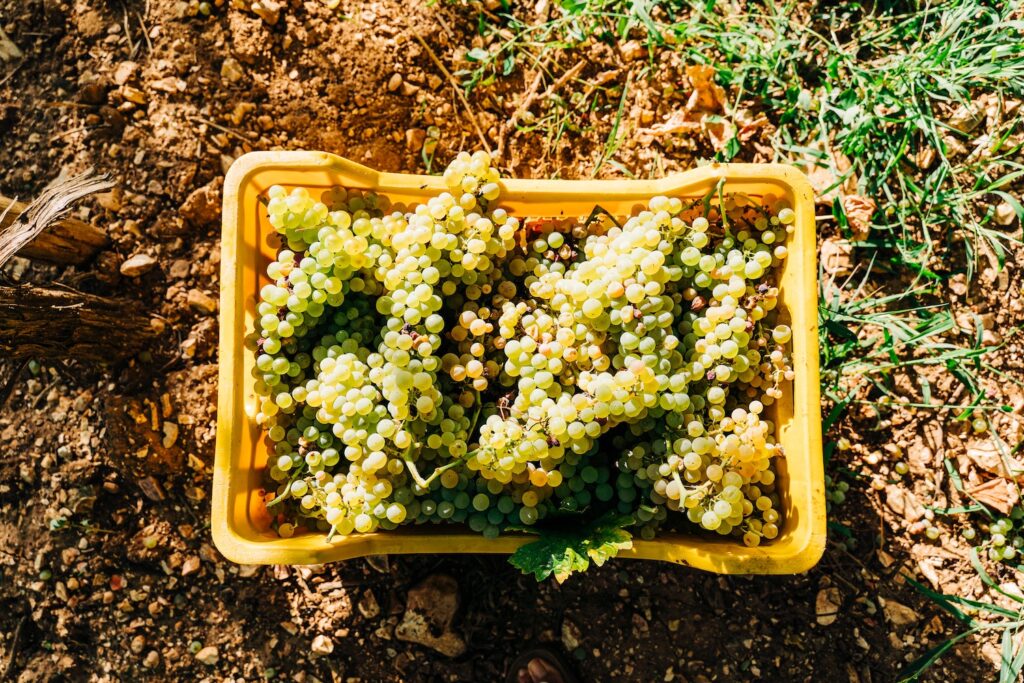This lesson addresses the question of obtaining recognition as UNESCO Intangible Cultural Heritage, using the example of a recent Italian case.
The images in the background here are images of the UNESCO headquarters in Paris at Place de Fontenoy, where negotiations can be seen in course under the auspices of the United Nations last October, regarding the nomination of the Grapevines of Pantelleria for recognition as UNESCO Intangible Cultural Heritage.
The path to becoming Intangible Cultural Heritage begins with clearly defining the element that is being nominated. In the case of Pantelleria, this was a traditional agricultural practice characterized by a very unique method of of cultivating the grapes. Rather than the classic rows, vines are planted in basins about 10-15 centimeters deep in dry ground and given no water. The grapes must be harvested strictly by hand and with a careful eye, for the vines do not grow in typical rows but rather in a kind of bush.
This tradition of Pantelleria has been in practice since the Phoenicians, and the people of Pantelleria have continued to pass down this tradition for centuries. It is extremely difficult, time consuming, expensive – and entirely unique.
Once we have identified the element, the community to which it belongs, Pantelleria in this case, it is now time to complete and submit the formal application, at which point the review process begins- a process that takes on average 1-3 years. The photos of this practice of Pantelleria are convincing in themselves, and clearly demonstrate a unique and antique tradition, but they are only a part of the element’s portfolio.
The 21 State members who make up the evaluation committee must be convinced, as well as the 190 States that make up UNESCO. In the case of the Grapevines of Pantelleria, after a long negotiation process the nomination was successful and recognition was obtained in October of 2014. The President of the Committee for the Safeguarding of Intangible Cultural Heritage can be seen here in the photo declaring the vine cultivation of Pantelleria to be Intangible Cultural Heritage of Humanity. This was the first agricultural practice in the world to receive this UNESCO recognition.
The declaration was greeted with great enthusiasm and applause, and the Italian ambassador to UNESCO was granted special recognition for his fundamental role in the process of nominating an element. The safeguarding of the element becomes the responsibility of the Italian government and people, because once an element becomes UNESCO Intangible Cultural Heritage it becomes common heritage shared by all citizens and their government, along with a responsibility to respect and preserve the element. In the photos the Italian ambassador to UNESCO is seen thanking the Italian Government for its role in the nomination of the agricultural practice of Pantelleria.
Becoming UNESCO Intangible Cultural Heritage is a long and difficult process that requires great dedication on the part of the community and individuals to the element itself, an understanding of the history and traditions that make the element a fundamental part of a the identity of a community and its heritage.
It is true that it is for the State, in this case the Italian government to protect the heritage but being the heritage of all any citizen has the duty to preserve it, to protect it and enhance it. What you see in the images are the times when our ambassador took the floor to thank on behalf of the Italian Government after this long negotiation. So it becomes UNESCO World Intangible Cultural Heritage: a difficult work with the communities, with the territories to understand the history, the traditions, the identity of that community, then a laborious negotiation in the world that involves all Member States of this Convention and ends with the clap, at best.

